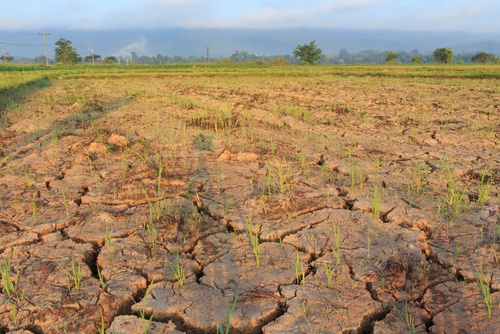 Last August, our whitepaper “El Niño: A Test of CPO Leadership and Your Supply Chain Resiliency Culture” forewarned supply chain practitioners and stakeholders of the various supply chain risks associated with the most severe El Niño since the 1950s. Extreme weather patterns and dry spells, like those generated by El Niño, present an array of supply chain risks and can compromise the production of industrially viable resources that could be hiding in your Bill of Materials.
Last August, our whitepaper “El Niño: A Test of CPO Leadership and Your Supply Chain Resiliency Culture” forewarned supply chain practitioners and stakeholders of the various supply chain risks associated with the most severe El Niño since the 1950s. Extreme weather patterns and dry spells, like those generated by El Niño, present an array of supply chain risks and can compromise the production of industrially viable resources that could be hiding in your Bill of Materials.
In this brief case study, we examine El Niño’s recently observed impact on the global output of palm oil and its prices, provide an overview of palm oil’s diverse industrial applications, and discuss how planning for “bigger picture” supply chain risk elements can help inform your company’s resilient procurement practices.
According to recent reports, El Niño’s impact on agricultural output in Southeast Asia is becoming more apparent. Indonesia and Malaysia are the world’s largest crude palm oil (CPO) producers and account for 90 percent of global CPO output, yet many palm oil companies throughout Southeast Asia are witnessing their plantations underperform due to unusually drier weather conditions brought upon by El Niño. In Malaysia alone, palm oil production has fallen 20 percent in the last two months. But due to widespread concerns over tighter CPO supply, palm oil prices have increased nearly 38 percent since a six-year low in August 2015.
Aside from being the most widely consumed cooking oil in the world, palm oil is a diverse precursor to many raw materials and compounds utilized across industrial operations. The biofuels sector uses palm oil as a biodiesel feedstock and an alternative to mineral oils for use in power stations. Palm oil’s fatty acid derivatives are also widely used in the production of industrial lubricants, bactericides, cosmetics, pharmaceuticals, and water-treatment products. Listed below are several materials traced downstream from palm-oil:
- Ascorbyl palmitate (antioxidant)
- Calcium stearate (tablet mold release agent and lubricant)
- Caprylic acid (treatment for some fungal and bacterial infections; surfactant, and cleaning agent)
- Cetyl palmitate (emollient ingredient)
- Isopropyl myristate (solvent for topical therapeutics)
- Sodium dodecyl sulfate (also known as SDS; surfactant)
- Magnesium stearate (tablet mold release agent and lubricant)
- Myristic acid (solvent for therapeutics)
- Palmitic acid (palmitoylation of proteins)
- Polysorbate 20 (surfactant and emulsifier)
- Polysorbate 80 (surfactant and emulsifier)
- Sodium caprylate (treatment for some fungal infections; surfactant, and cleaning agent)
- Sodium stearate (tablet mold release agent and lubricant)
- Vitamin A palmitate (antioxidant)
- Vitamin C ester (antioxidant)
The tightening palm-oil supply has done little to quell growing demand for the crop. While CPO inventories in Malaysia have declined to 2.11 million tons – reaching an 11-month low in February 2016 – sales of Certified Sustainable Palm Oil (CSPO) have surged over 162 percent since January 2015. Total demand for palm oil is slated to increase by 2.5 million tons between September and October 2016, yet global edible oil supplies are expected to increase by a mere 0.2 million tons in 2016, according to Dorab Mistry, director at Godrej Industries Ltd. As such, companies utilizing palm oil in their BOMs should acknowledge the three-tiered supply chain risk: the tighter palm oil supply, the widespread demand for sustainable palm-oil sources, and the role that macro-level phenomenon play in shaping the terrain of supply chain risk.
It is important to remember that El Niño is a dynamic weather system. For some regions, El Niño means torrential downpours and fierce storms. For others, it can mean crop-stifling conditions in areas unaccustomed to drought. Companies that plan their supply chain risk and resiliency management strategies with this in mind are better suited to decide when and where to source raw materials to protect profits and drive competitive advantage.
An examination of El Niño’s impact on global supply chains should be positioned within the larger discussion of climate related supply chain risks. The El Niño weather system has a limited timeframe. Climate change, on the other hand, does not. As such, companies are taking a more data-driven approach to the climate change to create risk models that effectively gauge the potential for supply chain disruption from individual events to “big picture” risks. By achieving a greater level of supply chain visibility through supplier mapping, companies are not forced to gamble with their sourcing decisions. Even though it may be easier to write-off bigger picture risks like El Niño and climate change because their impacts may not be immediately discernible, ignoring the larger risk elements at play could stage your operation for future procurement problems.




